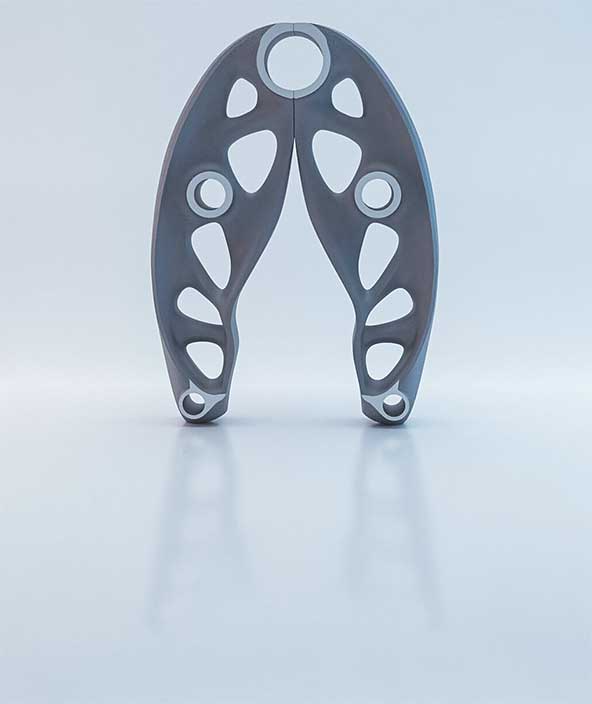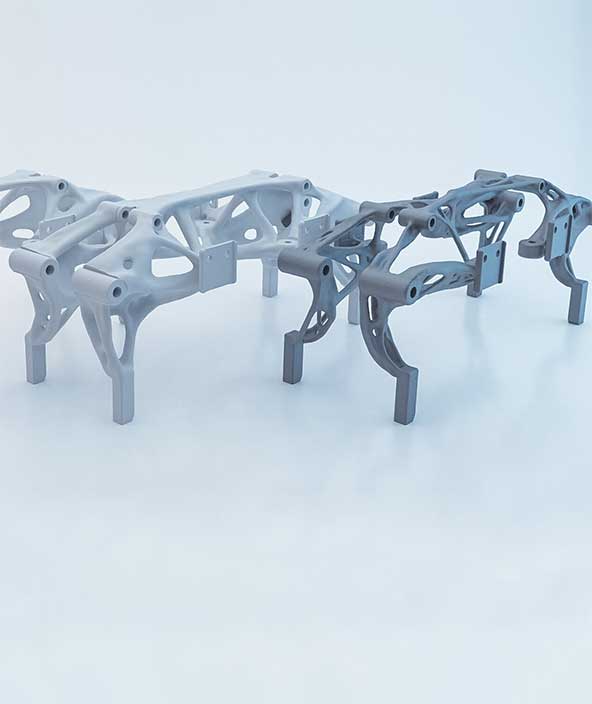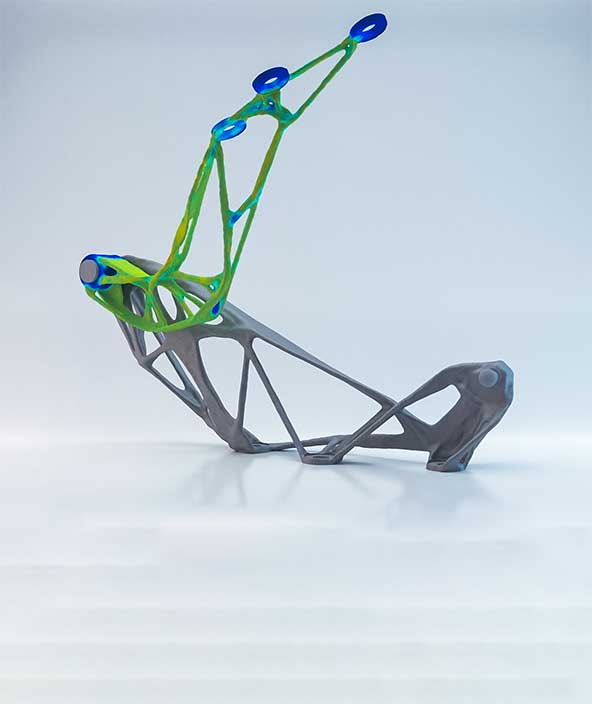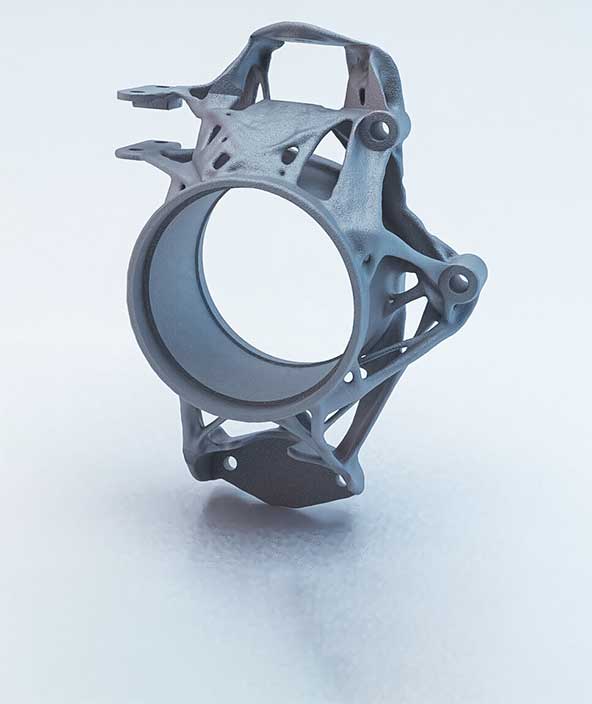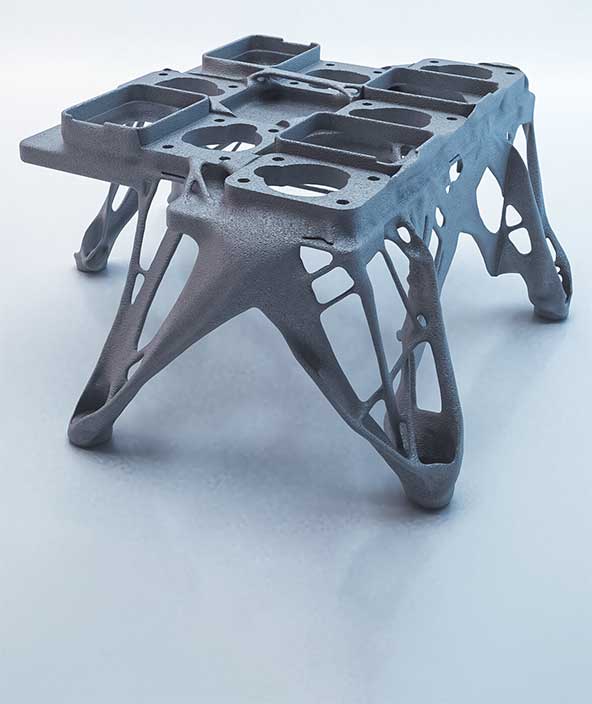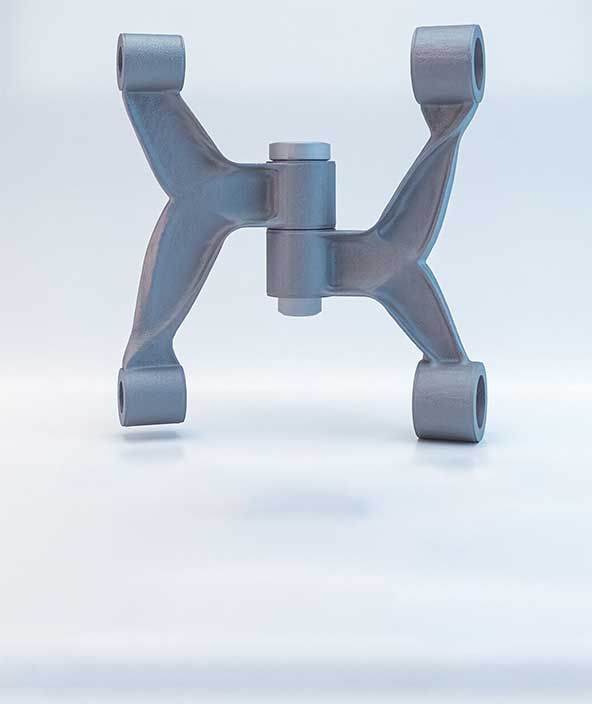Generative design
Use generative design to instantly create lightweight, optimised designs.

Redesign the future faster, lighter, stronger, smarter
Go from screen to machine faster with unmatched design for your additive manufacturing process.

Smart generative design empowering engineers to innovate quickly
Watch how transformative technology allows for the easy and fast generation of optimised designs without expert knowledge.

Infographic: Shifting the paradigm in metal 3D printing
Explore trends, drivers, market insights and key facts about generative design in this infographic.
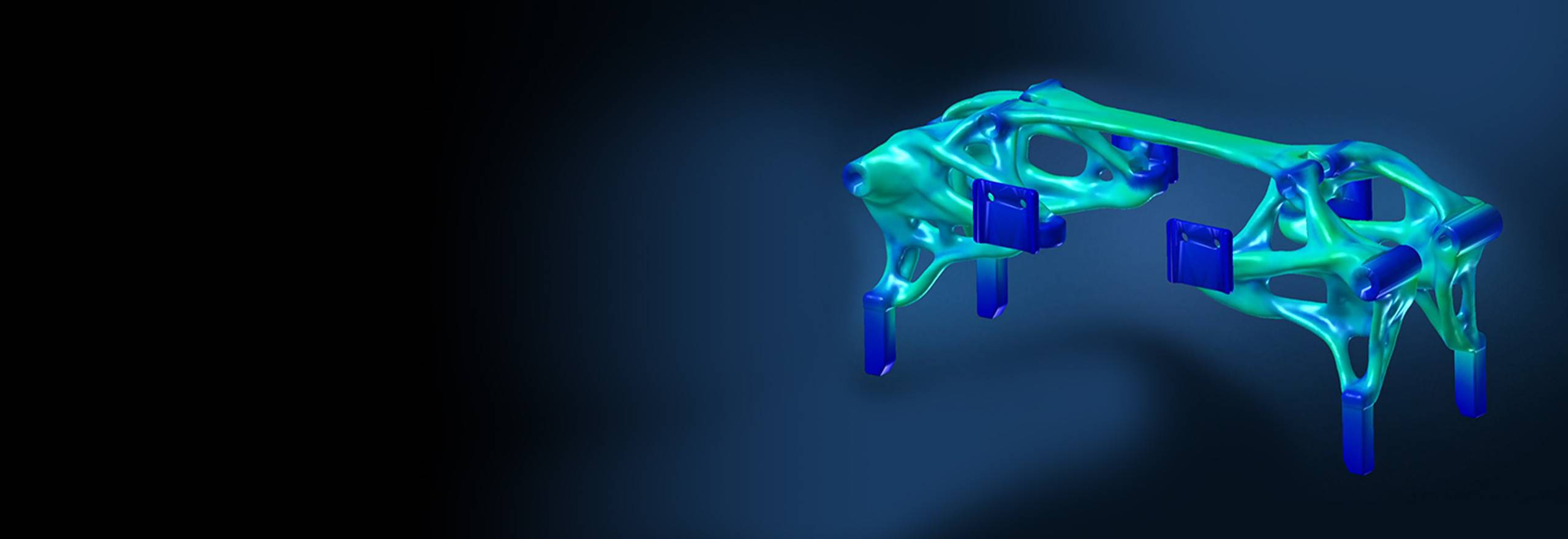
Free trial: MSC apex generative design
Start your free trial of MSC Apex Generative Design and enhance your design and optimisation today.

Whitepaper: The 7 habits of highly effective generative design
3D-printing design can bridge the gap between design and manufacturing. Learn how to boost the design process in this paper.

Redesign the future faster, lighter, stronger, smarter
Go from screen to machine faster with unmatched design for your additive manufacturing process.

Smart generative design empowering engineers to innovate quickly
Watch how transformative technology allows for the easy and fast generation of optimised designs without expert knowledge.

Infographic: Shifting the paradigm in metal 3D printing
Explore trends, drivers, market insights and key facts about generative design in this infographic.

Free trial: MSC apex generative design
Start your free trial of MSC Apex Generative Design and enhance your design and optimisation today.

Whitepaper: The 7 habits of highly effective generative design
3D-printing design can bridge the gap between design and manufacturing. Learn how to boost the design process in this paper.

Redesign the future faster, lighter, stronger, smarter
Go from screen to machine faster with unmatched design for your additive manufacturing process.

Redesign the future faster, lighter, stronger, smarter
Go from screen to machine faster with unmatched design for your additive manufacturing process.

Smart generative design empowering engineers to innovate quickly
Watch how transformative technology allows for the easy and fast generation of optimised designs without expert knowledge.

Infographic: Shifting the paradigm in metal 3D printing
Explore trends, drivers, market insights and key facts about generative design in this infographic.

Free trial: MSC apex generative design
Start your free trial of MSC Apex Generative Design and enhance your design and optimisation today.

Whitepaper: The 7 habits of highly effective generative design
3D-printing design can bridge the gap between design and manufacturing. Learn how to boost the design process in this paper.

Redesign the future faster, lighter, stronger, smarter
Go from screen to machine faster with unmatched design for your additive manufacturing process.

Smart generative design empowering engineers to innovate quickly
Watch how transformative technology allows for the easy and fast generation of optimised designs without expert knowledge.

Infographic: Shifting the paradigm in metal 3D printing
Explore trends, drivers, market insights and key facts about generative design in this infographic.

Free trial: MSC apex generative design
Start your free trial of MSC Apex Generative Design and enhance your design and optimisation today.

Whitepaper: The 7 habits of highly effective generative design
3D-printing design can bridge the gap between design and manufacturing. Learn how to boost the design process in this paper.

Redesign the future faster, lighter, stronger, smarter
Go from screen to machine faster with unmatched design for your additive manufacturing process.
Ready to learn more?
The smarter way to design
-
Overview
-
Video
Smart generative design
With consumer demand driving ever-increasing pressure to deliver products to market faster, generative design has become an essential product development tool. This technology uses intelligent software to autonomously generate multiple design alternatives based on a set of input parameters. Design engineers use it to rapidly develop and iterate product designs based on the constraints of the brief.
This method empowers engineers to make better decisions earlier in the product development cycle. By generating multiple design variations and then selecting and refining the best options rather than developing the first feasible idea, engineers can take time out of the product development process and ensure that only the best designs are progressed to prototyping, testing and eventually production.
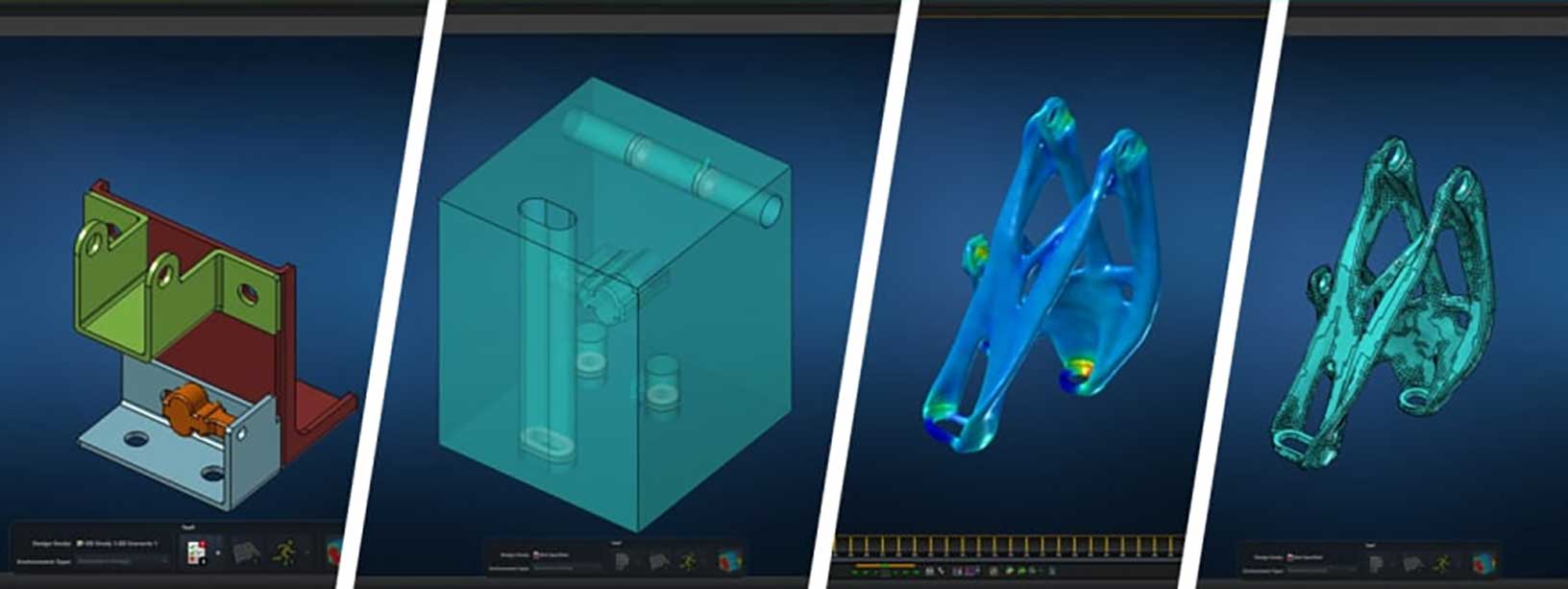
Design as nature does
What if we could optimise products as nature does without years of evolution? With Hexagon’s solutions, optimisation is easy as a breeze and lightning fast. The software’s high degree of automation frees the engineer from routine work and gives scope for concept and creativity.
Based on finite element analysis but utilising a very fine mesh with well-defined elements rather than the more traditional density field, our solutions can directly evaluate the occurring stresses, as well as reliably derive distinct geometries that are truly unimaginable by the human mind.
- Simplicity: No expert knowledge is required to conduct optimisations in this highly user-focused software
- Automated design: Almost automatically generate multiple smoothed design candidates that all satisfy the design criteria while minimising weight
- Direct output: Export geometry can be directly manufactured and used immediately without manual rework
- Overview
Smart generative design
With consumer demand driving ever-increasing pressure to deliver products to market faster, generative design has become an essential product development tool. This technology uses intelligent software to autonomously generate multiple design alternatives based on a set of input parameters. Design engineers use it to rapidly develop and iterate product designs based on the constraints of the brief.
This method empowers engineers to make better decisions earlier in the product development cycle. By generating multiple design variations and then selecting and refining the best options rather than developing the first feasible idea, engineers can take time out of the product development process and ensure that only the best designs are progressed to prototyping, testing and eventually production.

- Video
Design as nature does
What if we could optimise products as nature does without years of evolution? With Hexagon’s solutions, optimisation is easy as a breeze and lightning fast. The software’s high degree of automation frees the engineer from routine work and gives scope for concept and creativity.
Based on finite element analysis but utilising a very fine mesh with well-defined elements rather than the more traditional density field, our solutions can directly evaluate the occurring stresses, as well as reliably derive distinct geometries that are truly unimaginable by the human mind.
- Simplicity: No expert knowledge is required to conduct optimisations in this highly user-focused software
- Automated design: Almost automatically generate multiple smoothed design candidates that all satisfy the design criteria while minimising weight
- Direct output: Export geometry can be directly manufactured and used immediately without manual rework
